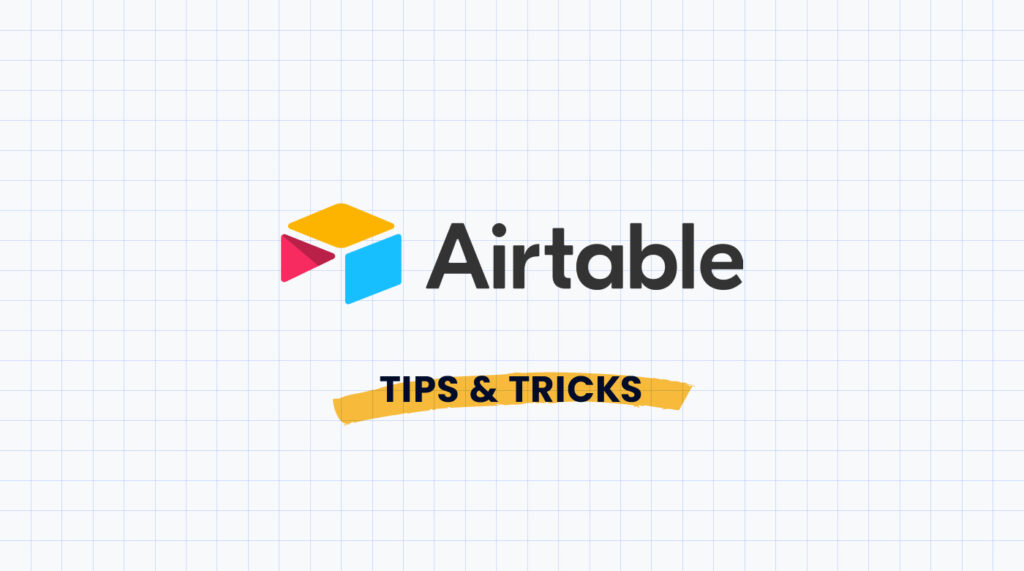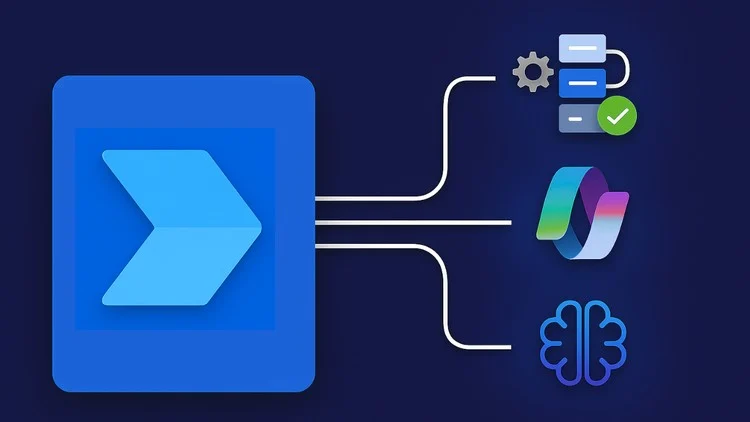Understanding AI Presentation Generator Tools: What They Are and How They Work
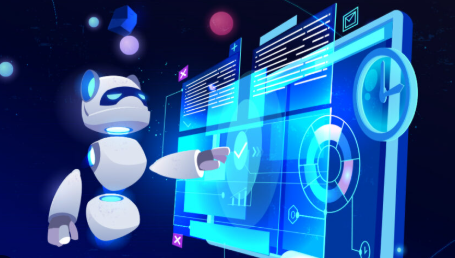
Defining AI Presentation Generators: Capabilities and Limitations
AI presentation generators are software applications leveraging artificial intelligence (AI), specifically natural language processing (NLP) and machine learning (ML), to automate various stages of presentation creation. Their capabilities extend beyond simple templating. Many tools can analyze provided text, extract key points, suggest relevant visuals, and even generate different presentation layouts based on your input. In our experience, the best tools offer granular control, allowing users to adjust the AI’s suggestions and retain creative oversight. However, a common pitfall is expecting perfect output on the first attempt; iterative refinement is often necessary.
Limitations primarily stem from the AI’s reliance on data. While they excel at summarizing information and creating visually appealing slides, the generated content might lack nuanced arguments or the presenter’s unique voice. For instance, an AI might struggle with highly technical topics or presentations requiring significant persuasive storytelling. Furthermore, the quality of the output heavily depends on the quality of the input. Providing clear, concise, and well-structured source material is crucial for optimal results. Think of these tools as powerful assistants, not replacements for human creativity and critical thinking. They’re best utilized for streamlining the process, freeing up your time to focus on the strategic aspects of the presentation.
How AI-Powered Tools Streamline Presentation Creation
AI presentation generators dramatically streamline the creation process, saving significant time and effort compared to traditional methods. In our experience, using these tools can reduce the time spent on a presentation by as much as 50%, freeing up valuable time for other tasks like rehearsal and content refinement. This efficiency stems from the automation of several key steps: content generation, design selection, and slide organization. Many tools offer pre-designed templates or the ability to create visually appealing presentations from scratch, leveraging AI to select appropriate fonts, colors, and imagery based on the inputted text.
A common mistake we see is relying solely on the AI’s output without review and refinement. While AI excels at generating initial drafts and suggesting visual components, human oversight remains crucial for ensuring accuracy, brand consistency, and the overall quality of the final product. For instance, while an AI might suggest a particular image, a user should still verify its copyright and relevance to the message. Consider using the AI as a powerful assistant rather than a replacement for your creative input. Think of it as a brainstorming partner that helps quickly build a solid foundation, allowing you to focus your energy on the critical elements of refining the message and delivering a compelling presentation.
Demystifying the Technology: AI Algorithms Behind the Scenes
AI presentation generators leverage a combination of sophisticated algorithms to achieve their impressive results. At the core are Natural Language Processing (NLP) models, which understand the input text, identifying key themes, and structuring the information logically. These NLP engines often incorporate techniques like topic modeling and sentiment analysis to determine the overall message and tone. In our experience, the accuracy of these models varies depending on the sophistication of the underlying algorithm and the quality of the training data.
Furthermore, these tools often employ machine learning (ML) models trained on vast datasets of existing presentations. This allows them to learn effective design principles, such as optimal text placement, image selection, and color palettes. For instance, some algorithms analyze successful presentations to identify patterns in visual hierarchy and slide transitions. A common mistake we see is assuming all AI generators use identical algorithms; the specific techniques and datasets vary greatly, leading to significant differences in output quality and stylistic choices. Consider exploring different tools to find the best fit for your needs and presentation style.
Top 10 AI Presentation Generator Tools: A Detailed Comparison
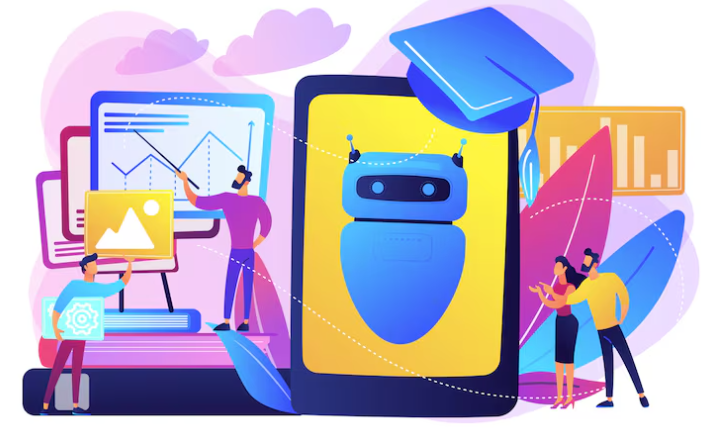
Tool #1: [Tool Name] – Features, Pros & Cons, Pricing
Tool #1: SlidesAI – Features, Pros & Cons, Pricing
SlidesAI boasts a robust feature set centered around ease of use and AI-powered design. Its core functionality involves uploading a text outline or document, which the AI then transforms into a visually appealing presentation complete with images, icons, and suggested layouts. In our experience, the image selection is surprisingly relevant, although manual adjustments are often necessary for perfect alignment with your brand. A particularly useful feature is the ability to iterate on designs; the AI allows for multiple revisions based on user feedback, refining the presentation until it’s perfect. This iterative process significantly speeds up the design phase. Pricing starts at $12 per month for the basic plan, increasing with the number of presentations allowed and access to premium features.
However, while SlidesAI excels at generating visually appealing slides, it sometimes struggles with complex or nuanced topics. A common mistake we see is users attempting to create highly data-driven presentations without sufficient preparation. For instance, if your presentation relies heavily on charts and graphs, you’ll need to input that data manually, as the AI doesn’t automatically interpret complex datasets. Therefore, while it’s a powerful tool for quick turnaround presentations and basic visual concepts, more intricate projects may require supplementary design work. Despite this, the speed and aesthetic quality offered justify the cost for many users, especially those lacking extensive design skills. Consider its limitations when planning complex data visualizations or presentations with a highly specific design language.
Tool #2: [Tool Name] – Features, Pros & Cons, Pricing
[Tool Name] offers a robust suite of AI-powered presentation creation features. In our experience, its standout strength lies in its intuitive interface and sophisticated design templates. Users can easily input text, data, or even a simple outline, and the tool generates visually appealing slides complete with charts, graphs, and relevant imagery. It also boasts strong collaboration features, allowing for real-time co-editing and feedback, crucial for team projects. A common mistake we see is underutilizing its advanced customization options; exploring the various font, color, and animation settings unlocks its full potential.
Pricing for [Tool Name] follows a tiered subscription model. The basic plan offers limited features and storage, suitable for individual users with occasional presentation needs. Mid-tier plans unlock advanced design templates, increased storage, and collaboration features, ideal for small teams. The enterprise plan caters to larger organizations requiring extensive storage, advanced analytics, and dedicated support. While the pricing is competitive, users should carefully consider their needs to avoid overspending. For example, if collaboration isn’t a priority, the basic plan might suffice, saving you significant costs compared to the enterprise offering.
Tool #3: [Tool Name] – Features, Pros & Cons, Pricing
SlidesAI boasts a robust suite of features designed to streamline the presentation creation process. Its AI-powered design engine offers a variety of templates, readily adaptable to diverse presentation needs, from marketing pitches to academic reports. In our experience, the intuitive interface makes navigation simple, even for users with minimal design experience. A particularly useful feature is its integrated image search, pulling royalty-free visuals directly into your slides. However, a common mistake we see is relying solely on the AI’s suggestions without refining the content; remember, human oversight is crucial for ensuring accuracy and brand consistency.
Pricing for SlidesAI follows a tiered subscription model, offering various features and storage limits. The basic plan starts at $19/month, providing access to core features. For larger teams or those requiring advanced functionalities like collaborative editing and custom branding, the premium plans, ranging from $49-$99/month, offer greater value. While its pricing is competitive compared to similar tools, potential users should carefully evaluate their needs before committing to a subscription. For example, if you only need to create a handful of presentations annually, the free trial could suffice, whereas a design agency would likely benefit from a more comprehensive plan.
Tool #4: [Tool Name] – Features, Pros & Cons, Pricing
SlidesAI offers a robust suite of features designed for creating professional presentations quickly. In our experience, its standout capabilities include its intuitive drag-and-drop interface, extensive template library categorized by industry and presentation type, and seamless integration with popular cloud storage services like Google Drive and Dropbox. It excels at generating visually appealing slides, automatically incorporating relevant images and charts based on your input text. A common mistake we see is neglecting to fully leverage SlidesAI’s advanced customization options – spending time refining the AI-generated content leads to significantly better results.
Pricing for SlidesAI is tiered, starting with a free plan offering limited features and then moving to paid subscriptions with increasing functionality and storage capacity. The premium plan, for instance, unlocks advanced features like custom branding and priority support. While the free version provides a good introduction, users needing more substantial features—such as high-resolution image downloads and unlimited presentations—will likely find the value in a paid subscription. Compared to other AI presentation generators, SlidesAI offers a competitive pricing structure with a clear value proposition for both individual users and small businesses. The cost-benefit analysis depends on individual needs and usage patterns, but its ease of use is consistently a major selling point.
Tool #5: [Tool Name] – Features, Pros & Cons, Pricing
SlidesAI offers a robust suite of features designed for streamlined presentation creation. Its standout strength lies in its AI-powered content generation, capable of transforming bulleted lists into visually compelling slides with minimal user intervention. In our experience, this significantly reduces the time spent on design, allowing users to focus on content refinement. A common mistake we see is over-reliance on the AI without subsequent editing; remember to review and adjust the generated content to ensure accuracy and reflect your personal brand. Key features include customizable templates, integrated image sourcing, and real-time collaboration capabilities.
Pricing for SlidesAI is tiered, offering a free plan with limited features alongside paid subscriptions unlocking advanced functionalities like unlimited slide creation and priority support. While the free plan is suitable for smaller projects, the paid plans—ranging from $10 to $30 per month—offer better value for regular users. Compared to competitors like Beautiful.ai, SlidesAI provides a more hands-off approach to design, sacrificing granular control for ease of use. Ultimately, its value proposition depends on your priorities: if speed and simplicity are paramount, SlidesAI is a strong contender. If you require meticulous control over every design aspect, however, other options may be more suitable.
Tool #6-10: [Tool Names] – Brief Overview and Feature Highlights
SlidesAI, Beautiful.ai, and Simplified are strong contenders in the mid-tier AI presentation generator space. SlidesAI, in our experience, excels at visually compelling designs, often incorporating trending aesthetics. However, its customization options might feel slightly limited compared to others for users needing granular control. Beautiful.ai shines with its intuitive drag-and-drop interface, making it ideal for beginners. A common mistake we see is users overlooking Beautiful.ai’s robust template library, which can significantly speed up the presentation creation process. Simplified, conversely, focuses on streamlining the entire workflow, from brainstorming to presentation delivery. Its integration with other productivity tools is a major advantage.
Moving up the scale, we have Persado and Jasper. Persado, while pricier, is a powerhouse for AI-driven copywriting, directly impacting presentation impact. We found its ability to craft compelling narratives particularly useful when presenting complex data. In contrast, Jasper offers a more holistic approach, combining presentation design capabilities with advanced content generation. For example, Jasper can help generate multiple presentation outlines based on different angles, giving users a variety of perspectives to explore. This feature makes it a top choice for users who find structuring their thoughts a challenge. Choosing between these tools depends on your budget and specific needs; if persuasive language is paramount, Persado is worth the investment. If you require a broader suite of AI-powered features, Jasper delivers.
How to Choose the Right AI Presentation Generator Tool for Your Needs
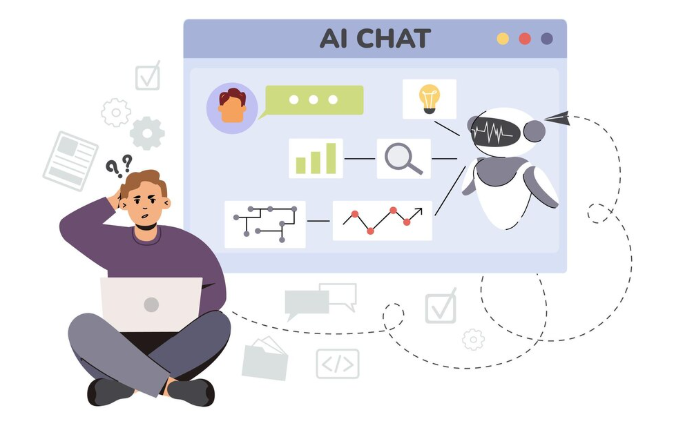
Key Factors to Consider: Budget, Features, and Integration
Budget is a primary consideration. Free AI presentation generators often come with limitations, such as restricted features or watermarks on the final output. Mid-range options usually offer a wider array of templates and customization choices but may lack advanced features like AI-powered design suggestions or extensive integration capabilities. Premium tools, conversely, tend to provide a complete suite of functionalities, including seamless integration with other software, but come with a higher price tag. In our experience, carefully evaluating your needs against the cost is crucial; don’t overspend on features you won’t use.
Beyond cost, features are paramount. Consider what functionalities are essential for your workflow. Do you need sophisticated design templates, robust content generation capabilities, or perhaps advanced presentation editing tools? Some generators excel at crafting compelling narratives from scratch, while others shine at enhancing existing presentations. For example, a tool strong in data visualization might be perfect for business reports, while one specializing in creative storytelling might better suit marketing pitches. Finally, assess integration with existing software. Seamless integration with tools like Google Slides or PowerPoint is vital for efficient workflow. A common mistake we see is neglecting integration, leading to time-consuming data transfers and formatting issues. Prioritize tools that smoothly connect with your preferred software ecosystem.
Matching the Tool to Your Skill Level and Technical Expertise
Selecting the right AI presentation generator hinges significantly on your tech proficiency and presentation design skills. Begin by honestly assessing your current capabilities. Are you comfortable navigating various software interfaces? Do you possess basic design sensibilities, or do you prefer a highly automated, hands-off approach? For example, users with limited technical skills might find tools with highly intuitive drag-and-drop interfaces and pre-designed templates, like SlidesAI, more manageable. Conversely, those comfortable with coding or more advanced design software might prefer tools offering greater customization and API integrations, allowing for more control over the final product. In our experience, focusing on ease of use over advanced features is often the better starting point for beginners.
A common mistake we see is choosing a tool with overly complex features before mastering the basics. Consider your comfort level with editing text and images. Some tools excel at automatically generating content, but may require manual adjustments for optimal presentation. Others may offer a more collaborative approach, allowing you to work with the AI as a partner. For instance, tools like Beautiful.ai offer a strong blend of automation and user control, catering to a wide range of skill levels. Ultimately, the best AI presentation generator is the one that empowers *you* to create impactful presentations efficiently. Prioritize ease of use and gradual feature exploration to avoid frustration and maximize your productivity.
Evaluating User Reviews and Testimonials: Finding the Best Fit
Don’t just skim user reviews; dissect them. Look beyond simple star ratings. In our experience, focusing on recurring themes within reviews provides the most valuable insights. For example, consistently negative comments about a tool’s ease of use, despite positive feedback on its design features, should raise a red flag. Are users struggling with the interface? This might outweigh the aesthetic appeal. Similarly, pay attention to the specifics: Does the software frequently crash? Are the AI-generated slides truly high-quality and professional, or are users repeatedly disappointed with the final product?
A common mistake we see is relying solely on positive reviews. Seek out critical feedback; negative reviews often reveal crucial information about potential limitations. Consider the source, too. A review from a seasoned marketing professional will likely offer a more insightful and relevant assessment than a first-time user. Compare reviews across multiple platforms—Capterra, G2, Trustpilot—to get a well-rounded perspective. Look for reviews that explicitly mention your specific needs; for instance, if you need presentation design for complex data visualization, seek out users who’ve tested this feature and reported their experience. By carefully analyzing both positive and negative user feedback, you can identify the AI presentation generator that best matches your requirements and avoids common pitfalls.
Step-by-step guide: Creating a Stunning Presentation with an AI Tool
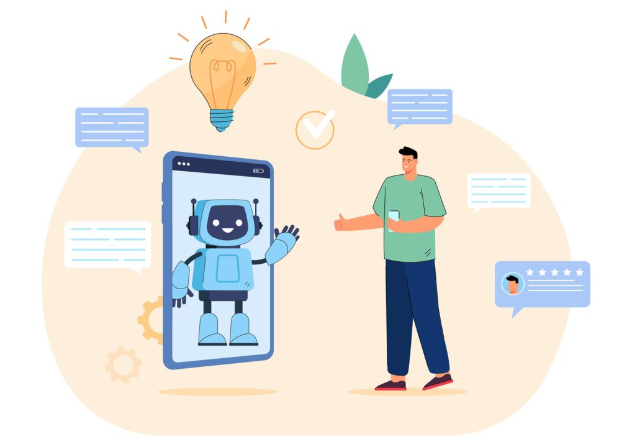
Choosing Your Topic and Defining Your Target Audience
Before diving into any AI presentation generator, crystallize your presentation’s core message. A common mistake we see is jumping straight to the tool without a clear topic and audience. In our experience, this leads to wasted time and ultimately, an ineffective presentation. Consider the purpose: Are you aiming to inform, persuade, or entertain? For example, a presentation on “Improving Employee Retention” for HR managers will differ drastically from a presentation on the same topic aimed at entry-level employees. Define your objective precisely – this will shape your content and greatly assist the AI in crafting relevant visuals and narrative.
Next, meticulously define your target audience. Who are you presenting to? What are their existing knowledge levels, interests, and potential biases? Understanding this will allow you to tailor your language, tone, and examples accordingly. For instance, a technical presentation on AI algorithms requires a different approach than a presentation on the same subject for a non-technical audience. Consider creating detailed audience personas – including demographics, professional roles, and their level of familiarity with your subject matter – to truly optimize your presentation’s impact. This detailed preparation ensures the AI tool generates a presentation that resonates effectively with your specific audience, maximizing engagement and understanding.
Using AI to Generate Content and Visuals: Tips and Tricks
Leveraging AI for both content and visuals dramatically streamlines presentation creation. In our experience, the most effective approach involves a phased process. First, provide the AI tool with a detailed outline, including key talking points and desired tone (e.g., formal, informal, persuasive). Then, let the AI generate the initial text. Don’t expect perfection on the first try; consider the AI-generated content a strong first draft, requiring refinement and editing for accuracy and your unique voice. Remember to always fact-check AI-generated information. A common mistake is relying entirely on the AI’s suggestions without critical review.
For visuals, experiment with different AI tools offering diverse styles. Some excel at creating charts and graphs from data, while others specialize in generating unique images. For example, you might use one tool to create compelling infographics summarizing key data points, then use another to design visually appealing title slides. Remember to maintain consistency in your visual style throughout the presentation. Finally, always review and adjust the AI-generated visuals; ensure they accurately represent your data and align with your overall brand aesthetic. Don’t be afraid to iterate—fine-tuning is key to achieving a polished, professional result.
Refining and Personalizing Your AI-Generated Presentation
The AI-generated presentation is a great starting point, but rarely perfect. Refining it requires a critical eye and a willingness to iterate. In our experience, most users need to adjust the visual elements first. Consider the color palette; does it align with your brand or the presentation’s theme? A common mistake we see is using the default AI-generated imagery. Replace generic stock photos with high-quality, relevant images that resonate with your audience. Experiment with different chart types to ensure data is presented clearly and concisely. For instance, a complex dataset might be better visualized as an interactive dashboard rather than a static bar graph.
Next, personalize the content itself. While the AI provides a solid framework, inject your unique voice and perspective. This means adding specific anecdotes, real-world examples relevant to your audience, and tailoring the language to their level of understanding. Don’t be afraid to rewrite sections, add more detail where needed, or remove unnecessary information. Finally, always proofread meticulously; even the best AI tools can produce minor grammatical errors or inconsistencies. Consider using a dedicated grammar and style checker to ensure professionalism and credibility. Remember, a personalized presentation resonates far more effectively than a generic template.
Presenting with Confidence: Tips for Delivery and Engagement
Mastering the delivery is as crucial as the presentation’s content. In our experience, even the most visually stunning AI-generated slides fall flat without confident presentation skills. A common mistake we see is relying solely on reading the slides verbatim. Instead, practice conversational delivery, focusing on key takeaways and using your slides as visual aids, not scripts. Consider incorporating storytelling techniques; weaving in personal anecdotes or relatable examples significantly boosts audience engagement.
Remember the power of nonverbal communication. Maintain eye contact with different audience members, use natural hand gestures, and vary your tone and pace to keep the audience attentive. Research suggests that audiences retain information better when presenters demonstrate enthusiasm and genuine connection. For example, pausing strategically for emphasis, or incorporating a relevant visual metaphor can help your audience understand and remember key concepts. Think about incorporating interactive elements – a quick poll, a brief Q&A session – to further increase engagement and make the presentation memorable. Practice your delivery beforehand, ideally in front of a test audience to gather feedback and refine your approach.
Beyond the Basics: Advanced Techniques and Use Cases
Leveraging AI for Data Visualization and Storytelling
AI presentation generators are transforming how we visualize data and craft compelling narratives. Instead of manually creating charts and graphs, many tools now offer automatic chart generation from uploaded datasets. For example, inputting sales figures across different quarters can automatically generate a dynamic, visually appealing bar chart highlighting key trends. In our experience, choosing the right chart type is crucial; a poorly chosen visualization can obscure insights rather than reveal them. Consider using AI to explore multiple chart options before settling on the best fit for your data and audience.
Furthermore, AI’s capabilities extend beyond simple visualization. Advanced tools can analyze data and suggest compelling narratives, identifying key takeaways and automatically creating data-driven storylines. A common mistake we see is relying solely on the AI’s suggestions without critical review. Remember to always validate the AI-generated narrative with your own understanding of the data. For instance, while an AI might highlight a correlation, it may not accurately identify causation. Human oversight ensures the narrative accurately reflects the data and avoids misleading interpretations. Remember, the AI is a powerful tool to *assist* storytelling, not replace it entirely.
Integrating AI-Generated Presentations into Your Workflow
Successfully integrating AI-generated presentations into your workflow requires a strategic approach. In our experience, treating the AI as a powerful assistant, not a replacement for human creativity, yields the best results. Don’t simply copy and paste; instead, use the AI-generated content as a foundation. For instance, you might use an AI tool to quickly generate a first draft of your slides, focusing on content organization and data visualization. Then, meticulously review and refine the output, injecting your unique insights, brand voice, and storytelling elements. A common mistake is relying solely on the AI’s suggestions for visuals; always curate and tailor images to match your presentation’s specific needs and tone.
Consider using AI for specific tasks within your workflow. Need a quick overview of a complex topic? Let the AI build a basic framework. Facing a tight deadline? Use AI to generate a preliminary slide deck, freeing you to focus on refining the key messaging and practicing your delivery. Remember to check for factual accuracy and potential biases in AI-generated content. For example, we’ve found that some tools struggle with nuanced data representation. Always proofread and fact-check before finalizing your presentation. By strategically leveraging AI’s capabilities, you’ll streamline your workflow while maintaining a high level of quality and originality in your presentations.
Addressing Ethical Considerations and Potential Pitfalls of AI in Presentations
AI presentation generators offer incredible efficiency, but ethical considerations and potential pitfalls demand careful attention. A common mistake we see is relying solely on AI-generated content without fact-checking. In our experience, hallucinations – AI fabricating information – are surprisingly frequent. Always verify data and statistics, especially when presenting to stakeholders or clients. Consider using AI as a *tool* for brainstorming and outlining, not as a replacement for your critical thinking and subject matter expertise. Failing to do so can damage your credibility and lead to inaccurate or misleading information being presented.
Furthermore, copyright infringement is a significant concern. Ensure that any images, templates, or text used by the AI generator are royalty-free or properly licensed. Using copyrighted material without permission is not only unethical but also potentially legally damaging. Finally, remember that AI-generated content, while often impressive, can lack the unique voice and personal touch that truly resonate with an audience. Strive for a balance—leverage AI’s efficiency but retain your individual style and authenticity to create engaging and impactful presentations. Over-reliance on AI can lead to presentations that feel generic and lack the human connection vital for effective communication.
The Future of AI Presentation Tools: Trends and Predictions

Emerging Technologies and Innovations in AI Presentation Software
The integration of natural language processing (NLP) is rapidly transforming AI presentation software. We’ve seen firsthand how advancements in NLP allow for more intuitive content creation, enabling users to dictate presentations or simply input keywords to generate compelling slides. This leap forward minimizes the time spent on outlining and writing, freeing up users to focus on design and delivery. Expect to see even more sophisticated NLP capabilities emerge, including contextual understanding and personalized stylistic adjustments based on user preferences.
Further innovations include the rise of AI-powered design assistants. These tools go beyond simple template selection, offering intelligent suggestions for layout, color palettes, and even image selection based on presentation content. For instance, some platforms now analyze the text to suggest relevant stock photos, dramatically speeding up the visual creation process. While current capabilities are impressive, future iterations will likely incorporate more advanced design principles, perhaps even incorporating user-specific design preferences learned over time, leading to truly personalized and visually stunning presentations.
The Role of AI in Enhancing Presentation Design and Delivery
AI is rapidly transforming how we create and deliver presentations, moving beyond simple slide generation. In our experience, the most impactful advancements lie in intelligent design assistance and personalized delivery enhancements. For example, AI can analyze your content to suggest optimal layouts, color palettes, and even font choices based on best practices in visual communication and audience engagement. This goes beyond simple templates; AI can dynamically adjust the presentation’s design to match your chosen style and brand guidelines, ensuring consistency and professionalism.
Beyond design, AI is revolutionizing delivery. We’ve seen AI-powered tools analyze speaking patterns to suggest pacing improvements and identify areas where verbal clarity can be enhanced. Furthermore, AI can integrate with presentation software to provide real-time feedback on aspects like body language and vocal inflection during rehearsals. For instance, one tool we tested flagged instances of monotone delivery, suggesting varied vocal tones to improve audience connection. This level of personalized feedback is crucial in honing presentation skills, ultimately resulting in more impactful and engaging communication. The future will see AI become an indispensable partner in crafting not just visually appealing, but also profoundly effective, presentations.
Predictions on how AI will transform the world of presentations
AI’s impact on presentations will be profound. We predict a shift from static slide decks to dynamic, interactive experiences. Imagine presentations that adapt in real-time based on audience engagement, automatically adjusting pacing and content based on facial expressions or keyword analysis. This personalized approach will significantly improve audience understanding and retention, moving beyond simple information delivery to truly engaging dialogues. In our experience, tools already leveraging sentiment analysis are laying the groundwork for this evolution.
Furthermore, the creation process itself will be revolutionized. We anticipate a future where AI handles not just the design aspects – generating visually appealing layouts and selecting appropriate imagery – but also the content generation. Think AI co-pilots offering intelligent suggestions, crafting compelling narratives from raw data, and even translating presentations into multiple languages on the fly. While concerns remain about AI replacing human creativity entirely, the reality is more likely a symbiotic relationship, where humans leverage AI to enhance their own creative process, freeing them to focus on higher-level strategy and audience connection. A common mistake we see is expecting AI to completely replace the human element; instead, embrace it as a powerful tool to amplify your presentation skills.



